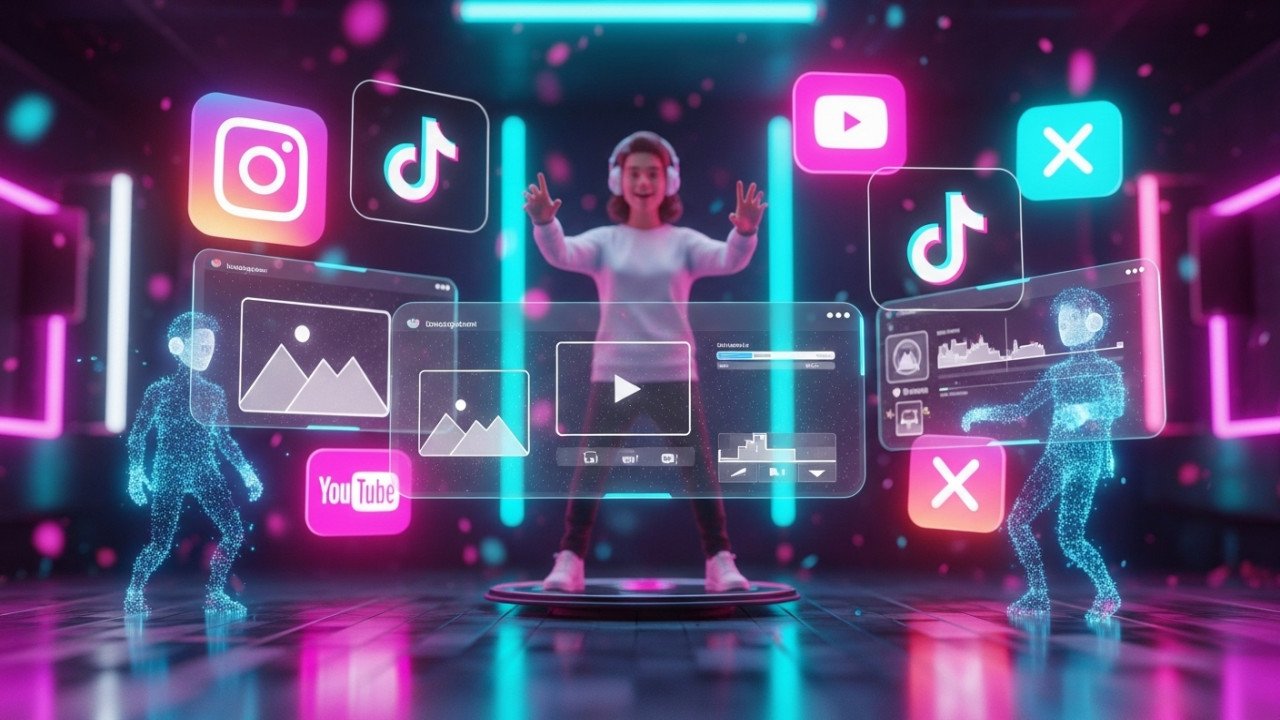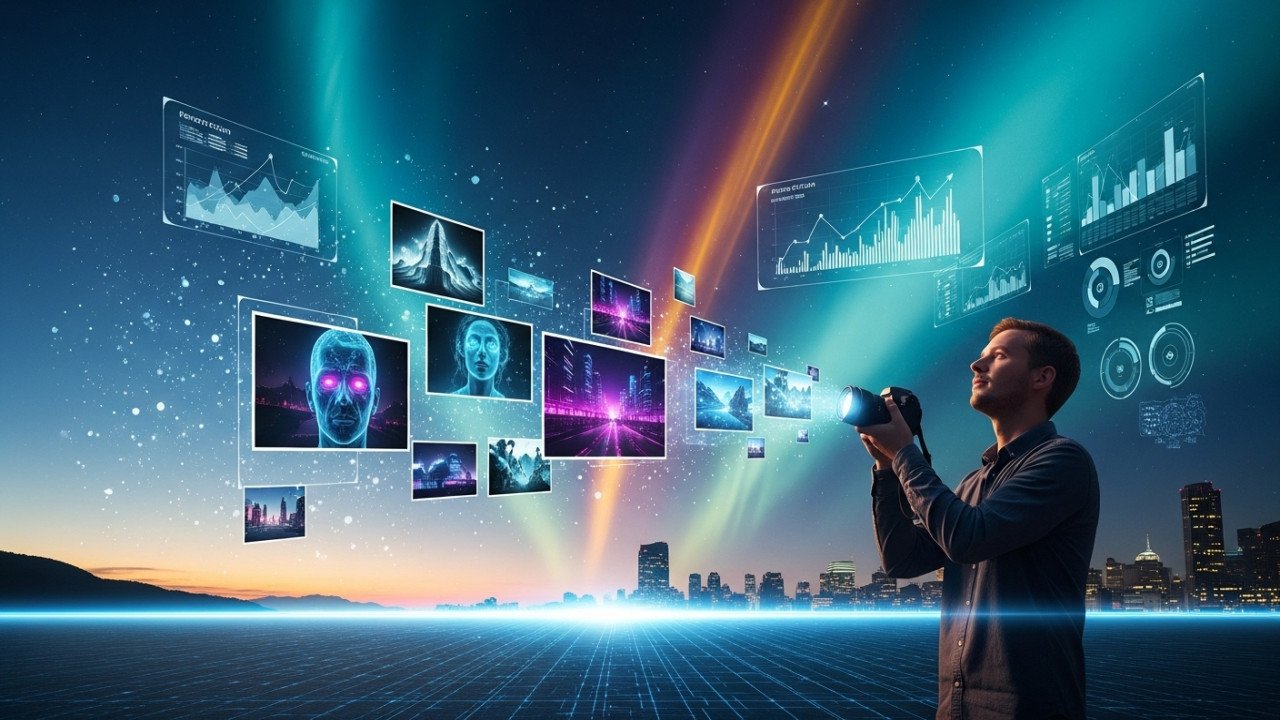AI Content Creation Ethics: Best Practices Guide 2025
Ethics of Using Artificial Intelligence in Digital Content Creation
The rapid adoption of artificial intelligence in digital content creation has sparked intense debates about creativity, authenticity, and ethical responsibility in the modern media landscape. As AI tools become increasingly sophisticated and accessible, content creators, businesses, and consumers grapple with fundamental questions about transparency, originality, and the human elements that define authentic creative expression.
The ethical implications extend far beyond simple tool usage to encompass issues of intellectual property, job displacement, misinformation risks, and the preservation of human creativity in an increasingly automated world. These considerations affect everyone from individual bloggers and social media creators to major media organizations and marketing agencies.
Understanding and navigating the ethical landscape of AI-powered content creation is essential for maintaining trust, ensuring responsible innovation, and preserving the integrity of digital communication while harnessing the powerful benefits that artificial intelligence can provide to creative professionals and their audiences.
The Ethical Framework for AI Content Creation
Fundamental Ethical Principles
The principle of transparency requires content creators to disclose when AI tools contribute significantly to content creation, enabling audiences to make informed decisions about the information they consume and trust.
Authenticity considerations involve maintaining genuine human insight and perspective while using AI assistance, ensuring that technology enhances rather than replaces the personal voice and expertise that audiences value.
Responsibility encompasses both immediate accountability for AI-generated content accuracy and long-term stewardship of AI technology's impact on creative industries and society at large.
Fairness involves ensuring that AI content creation practices don't unfairly disadvantage human creators, exploit training data sources, or perpetuate biases that harm marginalized communities.
Stakeholder Perspectives
Content creators must balance efficiency gains from AI tools with maintaining an authentic voice and genuine value creation while being transparent about their creative processes and technology usage.
Audiences deserve transparency about content creation methods while retaining access to authentic human perspectives and expertise that AI cannot replicate or replace effectively.
Original creators whose work may have been used in AI training datasets have legitimate concerns about attribution, compensation, and the use of their intellectual property in AI-generated content.
Industry professionals face questions about competitive fairness, professional standards, and the long-term implications of AI adoption for career sustainability and creative industry economics.
Regulatory and Legal Landscape
Intellectual property law continues evolving to address AI-generated content ownership, fair use of training data, and attribution requirements that balance innovation with creator rights protection.
Consumer protection regulations increasingly focus on disclosure requirements and truth-in-advertising standards that apply to AI-generated marketing content and commercial communications.
Platform policies and content guidelines adapt to address AI-generated content while balancing innovation encouragement with quality standards and authenticity requirements.
International variations in AI regulation create complex compliance challenges for global content creators and platforms operating across multiple jurisdictions with different ethical and legal standards.
Transparency and Disclosure Practices
Disclosure Requirements and Standards
Professional content creators should clearly indicate when AI tools play significant roles in content creation, though the specific level of disclosure may vary based on context, audience, and content type.
Marketing materials and commercial content require more stringent disclosure standards due to consumer protection regulations and advertising authenticity requirements that govern commercial communications.
Educational and informational content benefits from transparency about AI usage while helping audiences understand how technology assists in research, analysis, and presentation of information.
Creative content disclosure practices are still evolving as the industry develops standards that balance transparency with creative freedom and audience engagement considerations.
Best Practices for Transparency
Implement clear labeling systems that inform audiences about AI involvement without disrupting content flow or diminishing reader engagement and trust in the overall message and value provided.
Develop consistent disclosure policies across all content types and platforms while adapting language and presentation to match audience expectations and platform requirements.
Create educational content that helps audiences understand AI capabilities and limitations while building informed appreciation for both human creativity and AI assistance benefits.
Maintain detailed internal records of AI usage for accountability purposes while ensuring team members understand disclosure requirements and implementation procedures.
Audience Communication Strategies
Educate audiences about AI capabilities and limitations to build informed understanding rather than fear or unrealistic expectations about AI-generated content quality and reliability.
Frame AI usage as an enhancement rather than a replacement of human creativity while emphasizing the continued importance of human expertise, judgment, and authentic perspective.
Provide value-focused explanations that demonstrate how AI usage improves content quality, accuracy, or accessibility rather than simply reducing costs or production time.
Address concerns proactively by acknowledging limitations and maintaining open dialogue about ethical AI usage while building trust through consistent transparency and quality delivery.
Authenticity and Human Value
Preserving Human Creativity
Maintain personal voice and perspective as the primary drivers of content creation while using AI tools to enhance rather than replace unique human insights and experiences.
Ensure that AI assistance doesn't homogenize content or eliminate the distinctive qualities that differentiate creators and provide unique value to specific audiences and communities.
Invest in developing genuine expertise and original thinking that cannot be replicated by AI systems while using technology to amplify and distribute authentic insights more effectively.
Create content that demonstrates human understanding of context, emotion, and cultural nuance that AI systems cannot fully comprehend or replicate convincingly.
Adding Unique Human Value
Incorporate personal experiences, case studies, and insights that only human creators can provide while using AI to handle routine aspects of content production and optimization.
Provide analysis and interpretation that goes beyond what AI can generate while leveraging AI tools for research, fact-checking, and initial content structuring or brainstorming.
Engage authentically with audiences through personal interaction, community building, and relationship development that creates value beyond simple content consumption.
Develop subject matter expertise and thought leadership that establishes credibility independent of content creation methods while using AI to scale and enhance expert knowledge sharing.
Quality and Accuracy Standards
Implement rigorous fact-checking and quality assurance processes that ensure AI-generated content meets accuracy standards while maintaining creator accountability for published information.
Develop editorial oversight procedures that catch potential AI-generated errors, biases, or inconsistencies before publication while preserving content quality and reliability.
Create feedback mechanisms that help identify and correct issues with AI-generated content while continuously improving quality control processes and outcomes.
Maintain professional standards that prioritize accuracy and value over production speed while using AI efficiency gains to enhance rather than compromise content quality.
Intellectual Property and Fair Use
Training Data and Copyright Issues
AI training datasets often include copyrighted material, raising questions about fair use, attribution, and compensation for original creators whose work contributes to AI capability development.
Content creators using AI tools should understand the potential intellectual property implications of generating content that may inadvertently incorporate elements from copyrighted training materials.
Legal frameworks continue evolving to address AI-generated content ownership and liability while balancing innovation encouragement with creator rights protection and fair compensation.
Industry initiatives seek to develop ethical AI training practices that respect creator rights while enabling beneficial AI development for content creation and other applications.
Attribution and Credit Practices
Properly attribute human sources, research, and inspiration even when AI tools assist in content creation while maintaining academic and professional standards for source citation and credit.
Acknowledge when AI tools contribute significantly to content creation without diminishing credit for human creativity, expertise, and strategic thinking that guides the creation process.
Respect original creator rights when using AI tools that may have been trained on copyrighted material while seeking ways to support and compensate human creators appropriately.
Develop citation practices that acknowledge both human sources and AI assistance appropriately while maintaining transparency and respecting intellectual property rights.
Commercial Usage Considerations
Understand licensing terms and commercial usage rights for AI-generated content while ensuring compliance with platform policies and legal requirements for commercial applications.
Consider the liability implications of using AI-generated content for commercial purposes while maintaining appropriate insurance and legal protections for business applications.
Evaluate competitive fairness issues when AI tools provide significant advantages while considering industry standards and ethical competitive practices.
Address client and customer expectations about content originality while maintaining transparency about AI usage in commercial content creation services.
Impact on Creative Industries
Job Displacement Concerns
The automation of routine content creation tasks raises legitimate concerns about employment impacts for writers, designers, and other creative professionals who may face reduced demand for traditional services.
Industry adaptation requires supporting workforce transition through retraining programs and new role development that emphasizes uniquely human skills while incorporating AI collaboration capabilities.
Salary and pricing pressures affect freelancers and agencies as AI tools enable faster content production while potentially commoditizing certain types of creative work and services.
Professional development needs to shift toward skills that complement AI capabilities while maintaining competitive advantages in areas where human expertise remains irreplaceable.
Industry Transformation Patterns
Content creation workflows are evolving to incorporate AI assistance while preserving quality standards and creative value that justify professional fees and maintain client satisfaction.
New job categories emerge that focus on AI management, prompt engineering, and human-AI collaboration while requiring different skill sets than traditional creative roles.
Quality differentiation becomes more important as AI democratizes basic content creation while premium services focus on strategy, expertise, and authentic human insight.
Collaborative models develop where human creativity and AI efficiency combine to produce superior results than either approach could achieve independently.
Economic Implications
Market dynamics shift as AI tools reduce barriers to content creation while potentially increasing competition and pressure on pricing for basic creative services.
Value propositions evolve to emphasize strategic thinking, brand understanding, and creative direction rather than pure execution capabilities that AI can increasingly handle effectively.
Investment in AI tools and training creates new cost structures for creative businesses while potentially improving profit margins through increased efficiency and output capacity.
Client expectations change as AI capabilities become widely known, while requiring clear communication about human value and AI enhancement in service delivery.
Bias and Representation Issues
AI Training Data Bias
AI systems reflect biases present in their training data, potentially perpetuating stereotypes or limited representation that could harm marginalized communities through AI-generated content.
Content creators using AI tools must actively monitor for biased outputs while implementing correction measures that ensure fair and inclusive representation across all content types.
Industry initiatives work to improve AI training data diversity and representation while developing bias detection and mitigation tools for content creation applications.
Ongoing research addresses bias reduction techniques while helping content creators understand and address potential bias issues in AI-assisted content creation workflows.
Inclusive Content Creation
Implement review processes that ensure AI-generated content represents diverse perspectives and experiences while avoiding stereotypes or exclusionary language that could alienate audiences.
Collaborate with diverse team members and community representatives to identify potential bias issues while developing content that authentically represents different populations and viewpoints.
Use AI tools as starting points for inclusive content while adding a human perspective and cultural understanding that ensures appropriate representation and sensitivity.
Stay informed about bias research and mitigation techniques while actively working to improve representation and inclusivity in AI-assisted content creation practices.
Cultural Sensitivity Considerations
Understand cultural contexts and nuances that AI systems may not capture accurately while ensuring content respects different cultural perspectives and experiences appropriately.
Consult with cultural experts and community members when creating content about specific populations while using AI assistance responsibly for research and initial content development.
Avoid cultural appropriation or misrepresentation that could result from AI-generated content while maintaining authentic respect for different cultures and communities.
Develop cultural competency alongside AI literacy while ensuring that technology usage enhances rather than undermines cultural sensitivity and appropriate representation.
Quality Control and Accuracy
Fact-Checking and Verification
Implement systematic fact-checking procedures for AI-generated content while maintaining source verification standards that ensure accuracy and reliability for published information.
Develop multiple verification methods that catch potential AI errors while ensuring content meets professional journalism and publishing standards for accuracy and credibility.
Create accountability systems that track content accuracy over time while identifying areas where AI assistance may be more prone to errors requiring additional oversight.
Maintain updated knowledge about AI limitations and common error patterns while adjusting quality control procedures to address specific risks associated with different AI tools.
Source Attribution and Credibility
Properly cite sources and research used in AI-assisted content creation while maintaining academic and professional standards for source attribution and credibility assessment.
Verify AI-generated claims and statistics independently while ensuring that all factual assertions meet reliability standards appropriate for the content type and audience.
Distinguish between AI-generated hypotheses and verified facts while clearly communicating uncertainty levels and evidence quality to audiences appropriately.
Maintain source diversity and avoid over-reliance on potentially biased or limited information sources that AI systems may preferentially access or recommend.
Editorial Oversight Processes
Establish editorial review procedures that ensure AI-generated content meets quality standards while preserving editorial independence and professional judgment in content decisions.
Train editorial teams on AI capabilities and limitations while developing expertise in reviewing and improving AI-assisted content effectively and efficiently.
Create feedback loops that help improve AI usage over time while maintaining editorial control over content quality, accuracy, and appropriateness for target audiences.
Document quality control procedures and results while building organizational knowledge about effective AI integration and oversight in content creation workflows.
Misinformation and Manipulation Risks
Deepfakes and Synthetic Media
Advanced AI tools can create convincing but false images, videos, and audio content that pose significant risks for misinformation and manipulation in digital communications.
Content creators must understand deepfake detection methods while avoiding the creation or distribution of synthetic media that could deceive audiences or spread false information.
Industry standards are being developed for identifying and labeling synthetic media while building consumer awareness about deepfake capabilities and detection methods.
Legal and ethical frameworks evolve to address synthetic media usage while balancing creative freedom with protection against harmful manipulation and misinformation.
Information Verification Challenges
AI-generated content can inadvertently spread misinformation through factual errors or outdated information while appearing authoritative and well-written to unsuspecting audiences.
Verification becomes more complex as AI-generated content proliferates while requiring new approaches to source checking and information validation in digital media consumption.
Platform detection systems work to identify AI-generated misinformation, while content creators must implement verification procedures that prevent accidental misinformation spread.
Public education about AI capabilities helps audiences develop critical evaluation skills while maintaining healthy skepticism about information sources and verification needs.
Manipulation Prevention Strategies
Implement transparency measures that help audiences identify AI-generated content while preventing deceptive usage that could manipulate opinions or spread false information.
Develop ethical guidelines for AI usage in persuasive content while ensuring that AI enhancement doesn't cross into manipulation or deceptive communication practices.
Collaborate with fact-checking organizations and verification services while building a reputation for accuracy and reliability that counters potential misinformation risks.
Support industry initiatives that combat AI-powered misinformation while maintaining ethical standards that preserve public trust in legitimate AI-assisted content creation.
Platform Policies and Guidelines
Social Media Platform Requirements
Major social media platforms develop policies addressing AI-generated content while requiring disclosure for certain types of AI-created posts and implementing detection systems.
Content creators must understand platform-specific requirements for AI disclosure while ensuring compliance with evolving policies that may affect content reach and monetization.
Algorithm treatment of AI-generated content varies across platforms while potentially affecting organic reach and engagement for content created with AI assistance.
Community guidelines increasingly address AI usage while balancing innovation encouragement with quality control and authenticity requirements for platform content.
Content Management System Policies
Blogging platforms and content management systems implement guidelines for AI-generated content while providing tools and features that support ethical AI usage and disclosure.
Monetization policies may restrict or require disclosure for AI-generated content while affecting advertising revenue and partnership opportunities for content creators.
Copyright protection features help detect potential intellectual property issues with AI-generated content while providing safeguards against inadvertent infringement.
Analytics and reporting systems adapt to track AI-generated content performance while providing insights that help creators optimize their AI usage strategies effectively.
Industry-Specific Regulations
News and journalism organizations develop editorial standards for AI usage while maintaining credibility and accuracy requirements that preserve public trust in media coverage.
Marketing and advertising industries face specific disclosure requirements for AI-generated promotional content while ensuring compliance with consumer protection and truth-in-advertising laws.
Educational content creation must address academic integrity standards while ensuring that AI assistance supports rather than undermines learning objectives and educational value.
Professional services face ethical requirements about AI disclosure while maintaining client relationships and service quality standards that justify professional fees and expertise.
Future Ethical Considerations
Evolving Technology Capabilities
Advanced AI systems will create new ethical challenges as capabilities improve while requiring ongoing evaluation and adaptation of ethical frameworks and professional standards.
Multimodal AI that combines text, image, and video generation will raise complex questions about authenticity and disclosure while creating new possibilities for creative expression.
Real-time AI generation capabilities may blur the lines between human and AI creation while requiring new approaches to transparency and authenticity in live content creation.
AI personalization for individual audience members raises privacy and manipulation concerns while creating opportunities for more relevant and valuable content experiences.
Regulatory Development
Government regulation of AI content creation will likely expand while affecting disclosure requirements, liability standards, and professional practices across creative industries.
International coordination efforts may develop consistent standards for AI ethics while addressing cross-border content distribution and platform regulation challenges.
Industry self-regulation initiatives will play crucial roles in establishing best practices while maintaining innovation, flexibility, and competitive market dynamics.
Professional certification and training programs may emerge while helping content creators develop expertise in ethical AI usage and implementation strategies.
Industry Standards Evolution
Professional organizations will develop ethical guidelines and best practices while providing training and certification programs for responsible AI usage in content creation.
Quality standards will evolve to address AI-generated content while maintaining professional excellence and client satisfaction in increasingly competitive markets.
Collaboration tools and platforms will integrate ethical AI features while supporting transparency and quality control in team-based content creation workflows.
Educational curricula will incorporate AI ethics training while preparing future content creators for responsible technology usage and professional practice standards.
Best Practices and Recommendations
Developing Ethical Guidelines
Create comprehensive policies that address AI usage in your organization while ensuring consistency across all content types and team members working with AI tools.
Establish clear decision-making frameworks for ethical dilemmas while guiding situations where AI usage implications are unclear or complex.
Implement regular review and updating processes for ethical guidelines while adapting to technological developments and changing industry standards and regulations.
Involve diverse stakeholders in guideline development while ensuring perspectives from different communities and professional backgrounds inform ethical decision-making processes.
Implementation Strategies
Provide training and education for all team members while building competency in both AI tools and ethical considerations that guide responsible usage decisions.
Create accountability systems that track AI usage and outcomes while identifying areas for improvement and ensuring compliance with established ethical guidelines.
Develop feedback mechanisms from audiences and stakeholders while incorporating input into the continuous improvement of ethical AI practices and policies.
Build relationships with industry organizations and experts while staying informed about best practices and emerging ethical considerations in AI content creation.
Monitoring and Evaluation
Regularly assess the impact of AI usage on content quality while ensuring that efficiency gains don't compromise authenticity or audience value and satisfaction.
Track audience response and engagement with AI-assisted content while identifying any changes in trust or perception that may require strategy adjustments.
Monitor legal and regulatory developments while adapting practices to maintain compliance with evolving requirements and industry standards.
Evaluate long-term sustainability of AI practices while ensuring that current approaches support rather than undermine long-term business goals and professional reputation.
Conclusion
The ethics of using artificial intelligence in digital content creation require careful consideration of transparency, authenticity, and responsibility while balancing innovation benefits with potential risks and societal impacts.
Success in ethical AI content creation depends on maintaining human creativity and value at the center while using technology to enhance rather than replace the unique insights and perspectives that audiences seek.
Transparency and accountability must guide all AI usage decisions while building trust with audiences and maintaining the integrity that sustains long-term success in content creation and communication.
The future belongs to content creators who can thoughtfully integrate AI capabilities while preserving the human elements that make content meaningful, trustworthy, and genuinely valuable to audiences.
Ethical AI usage requires ongoing learning and adaptation as technology evolves while maintaining a commitment to principles that protect both creators and consumers in the digital content ecosystem.
By embracing responsibility and transparency while leveraging AI benefits appropriately, content creators can contribute to a future where artificial intelligence enhances rather than undermines human creativity and authentic communication.
The choices made today about ethical AI usage will shape the future of content creation while determining whether these powerful technologies serve to enhance or diminish the quality and trustworthiness of digital communication.
Read also: AI Education Tools: Best Smart Learning Platforms 2025.











Comments (0)
No comments found